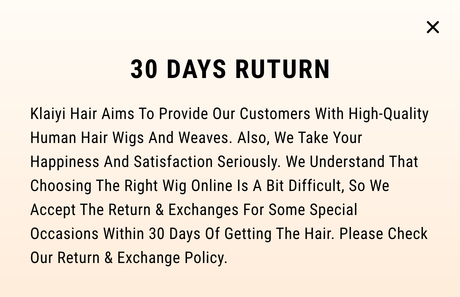Join The Forum To Get inspired Ideas
How Long Does It Take To Put In Hair Extensions?
Introduction
Considering a hair makeover with extensions? Let's chat about how long you could expect to spend in the salon! In general, the time it takes to put in hair extensions can fluctuate greatly depending on various factors.
One of these is obviously the type of extension you're choosing. For instance, when it comes to clip-in extensions, one of the most convenient types, you can whip out a fabulously full head of hair in as little as five minutes.
One can probably assume that the average time to make an extension would be approximately between 2 and 6 hours, but for some reason, the number of extensions varies depending on each customer and is limited to less than five.

Another variable can be the experience of the stylist. Hair extensions, like any skill, are faster to install for those who have been doing it for a long time.
Thus, if you have a free day and you are ready for a metamorphosis, it is advisable to plan it in advance. It might just take an hour or two, or it may end up being a three- to four-hour session, but whatever the case may be, the results can truly be worth all of the wait.
How long does your hair have to be for extensions?
Your hair length determines whether hair extensions will improve your look; however, most people should have hair that is at least 4 to 6 inches long for easy attachment of the extensions and to allow them to blend well with their own natural hair.

This size is relevant because it confirms the reliability of the extensions, provides sufficient coverage, and promotes their strength. If you want a longer extension in particular, a starting point could be at least 8 to 10 centimeters or just over 3 inches of natural hair length; this allows enough space for bonding and blending securely.
How do I remove hair extensions at the root?
Do you need a license to do hair extensions?
Ever thought of obtaining a license to add an extra length of branches to trees? In this case, let’s try unraveling the intricacies of this regulation!
The licensing requirements for installing hair extensions can vary in different parts of the world.While in some states, a cosmetology license does not guarantee an absolute and unquestionable ticket to enter the world of hair extensions, don't dismiss it as a box left unchecked.
A cosmetology license might not be a hard and fast rule, but it certainly chalks up your credibility dockets and opens doors to wider opportunities. Meanwhile, it's a different narrative in other jurisdictions.

Like the classic one-size-does-not-fit-all precedent, not all state laws are relaxed about letting cosmetologists skip the license lane. In these regions, a license to weave in hair extensions is deemed necessary.
If you're in a bit of a pickle over this, head to your local Department of Licensing and Regulation for a clear-cut answer. An alternative is to explore on-the-job training internships at licensed barber, cosmetology, or hair design schools, as these programs could potentially divert you away from the licensing requirements.
So, if you've set your heart on delivering swoon-worthy hair makeovers with extensions, starting your venture with a license could be an advantage!
Can you swim with hair extensions?
Swimming with hair extensions and still being able to enjoy water-based activities while retaining the appealing long hair effect is an enjoyable way.
Whether it is feasible to swim with hair extensions and what level of attention one needs to show are the main considerations, depending on the environment and preventive measures that can be taken. Usually, freshwater and chlorinated pools are not a major threat, but only when adequate post-swim care is practiced.
It is better not to swim in seawater because it has excessive amounts of salt that can lead to hair tangling or even weaken the connection between your hair and the extensions.

In order to keep hair safe from chemicals and salt, dampen your hair before getting into the water, coat it with a leave-in conditioner for added protection, and create a braid or bun to reduce tangling. Another precaution you can take is wearing a swimming cap.
In order to wash out the chlorine or salt soaked into your hair from swimming, you should begin by rinsing it with clean water after completing your swim. Then, use a gentle sulfate-free shampoo and finish by conditioning it well using an effective nourishing conditioner that can restore lost moisture and softness.
When some time has passed, brush the hair from the tips and keep brushing it gradually, using a wide-toothed comb to make sure that you don’t tear out the extensions.
It is important to make sure that all the bonding areas are thoroughly dried after washing to avoid any moisture, as this can cause weakening of the bonds or adhesive. This moisture is particularly devastating for the bonding capacity of micro-links, tape-ins, or keratin bonds, leading to early wear-off.
To maintain the health of your extensions as well as your own natural hair, try to dry them properly and comb them carefully. To minimize the effects of these damaging elements, you have the opportunity to exercise proper precautions, enabling you to still enjoy water sports without worrying about ruining your hair extensions.
Can you dye hair extensions while in your head?
Deciding to color hair extensions that are attached to your scalp is a decision that involves both ease and safety. According to professionals, dyeing extensions while they are in place can be an effective way of achieving the desired results without harming the natural hair.

But prior to actually going ahead with it, it is crucially important to ascertain that the extensions you have chosen are human hair-based since synthetic ones may not take the color and could even damage them.
To keep your hair extensions intact, avoid using tape or adhesive in areas like bond sites. The result of dyeing should be dried with a series of gentle procedures that are based on safeguarding the strand itself as well as the hair extensions they follow.
This way, you can be sure that both your hair extensions and natural tresses stay healthy and in good condition, matched not only in hue but also in health.














